Lisbon’s most obvious cultural calling card – other than blue and white azulejo tiles, are under your feet, the black and white cobblestone Portuguese Pavement, or calçada Portuguesa in Portuguese.
Calçada Portuguesa covers much of Lisbon’s ground, and it can be found in towns all over Portugal.
The black and white stone usually comes from the Serras de Aire e Candeeiros region of central Portugal. In the Azores, basalt is the stone of choice, and the design background is usually black, whereas the details are in white – the opposite of mainland Portugal.
Today Portuguese pavement can be found all over the world, particularly in former Portuguese colonies – including Angola, Mozambique, Brazil, and Macau. It even exists in Portuguese communities in the United States.
Typical motifs of Portuguese Pavement
Maritime themes are extremely common, celebrating Portugal’s history as a nation that dominated the seas in the 15th century.
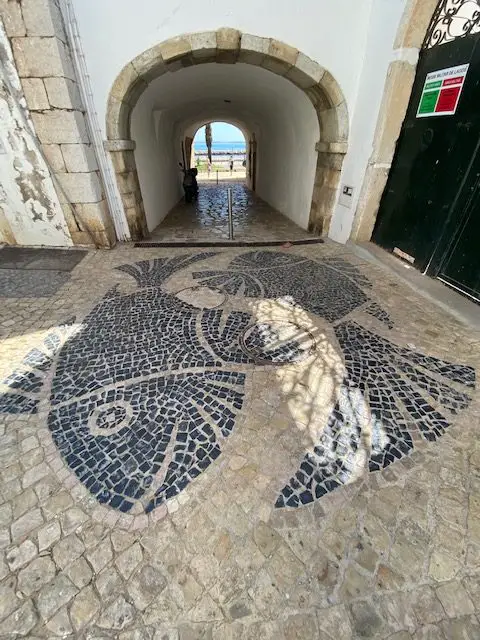
Other common motifs are birds, sunflowers, rosettes, and the cross of Christ.
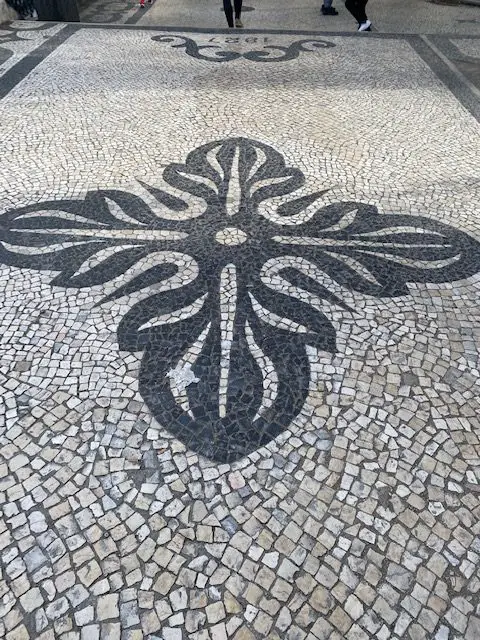
The crows and the caravel are symbols of Lisbon that appear on the city’s coat of arms. According to urban legend, St. Anthony’s body was brought back to rest in Lisbon, the ship was accompanied by two crows.
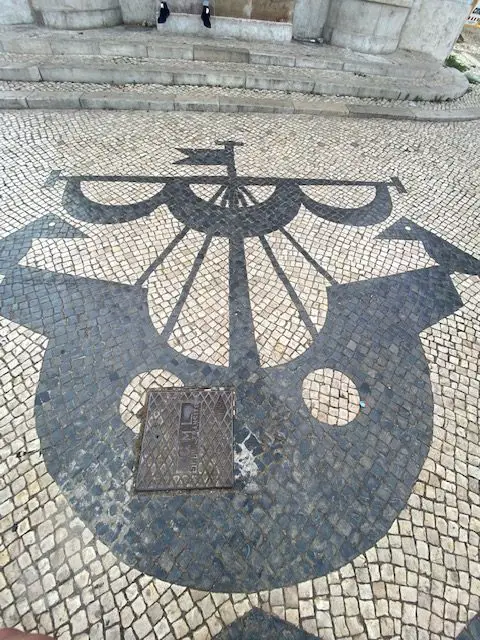
There are sea monsters on the ground at the Lisbon Oceanarium.
You might also notice that some of the patterns have small irregularities in them, or little additions. You might see grapes, or a bird, or flowers, or a letter. Perhaps this was the way that the calceteiro signed his work. For the most part, these artists have been anonymous over the centuries.
How Portuguese Pavement is made
A shallow trench is filled with small rocks and clay. Above this, a cement mixture is applied, and then the black and white cobblestones are laid by hand. Workers use a wooden mold to fill in the darker shapes.
The tools of the trade include a hammer with two heads – one is sharp and pointed for chipping stone, and the other side is flat for tapping the stones into place.
The stone-workers also use a tool called a maço – a 45 pound weight on a stick that is used for pounding the mosaic into a level height.
A short stool also makes the difficult job a little more bareable for the artisans, who are known as calceteiros.
The history of Portuguese Pavement
The Portuguese were inspired by the Romans who paved the roads to their various colonies. Olisipo, today Lisbon, became a part of the Roman Republic in 138 BC.
The first Calçada Portuguesa was laid by prisoners in the Castelo São Jorge in 1842. They were under the direction of General Eusébio Cândido Pinheiro Furtado, a military engineer. This zig-zag mosaic no longer exists today.

The locals loved the mosaic and immediately decided that Praça Dom Pedro IV (Rossio Square) should be outfitted in black and white cobblestones as well. This was done in 1848.
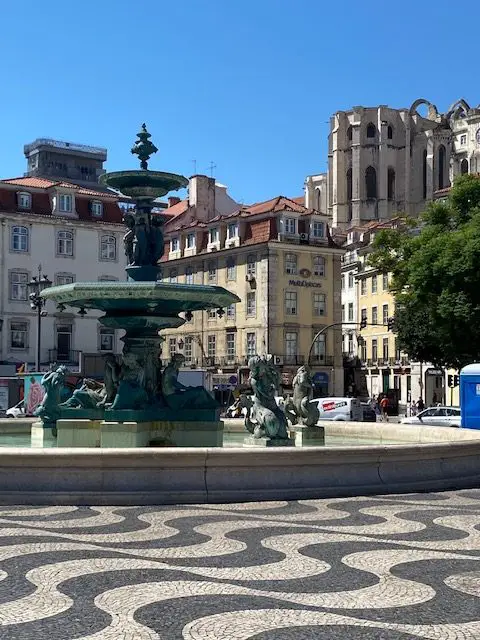
Rossio Square, with its undulating black and white cobblestone waves, is perhaps the largest and most famous calçada Portuguesa in Lisbon. Known as Mar Largo (Long Sea), the black and white cobblestone mosaic covers the 6000 square meter plaza.
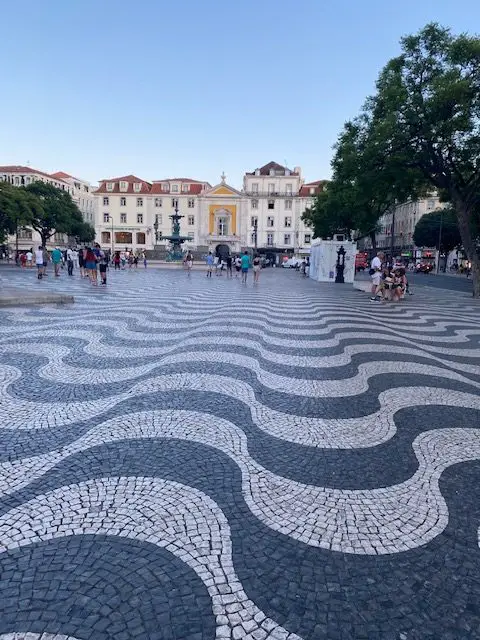
Some of the best calçadas Portuguesas in Lisbon
Nearby you will also notice that the way to Praça do Comércio and the arch are also paved with black and white designs on the pedestrian boulevard Rua Augusta.
Praça do Comércio itself was once paved with black and white cobblestone as well, but it was removed.
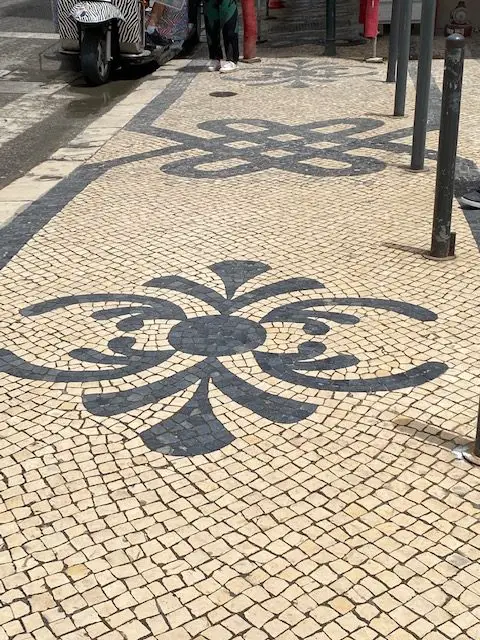
West of Praça do Comércio is the Municipal Square, home of Lisbon’s City Hall. This square is paved with triangle patterns.
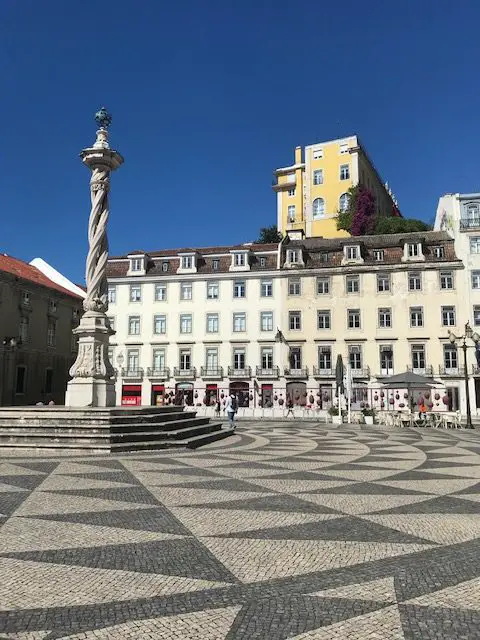
Nearby Chiado has some of the most beautiful designs.
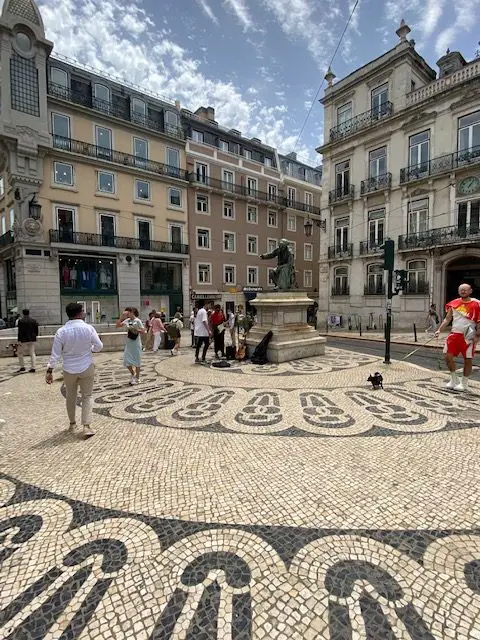
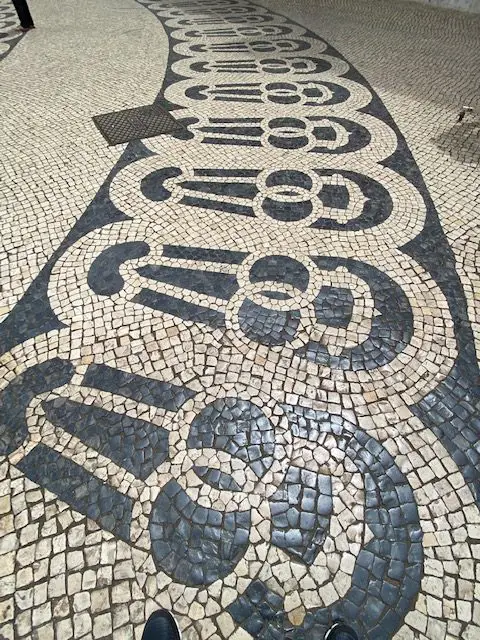
Portuguese pavement on Avenida da Liberdade
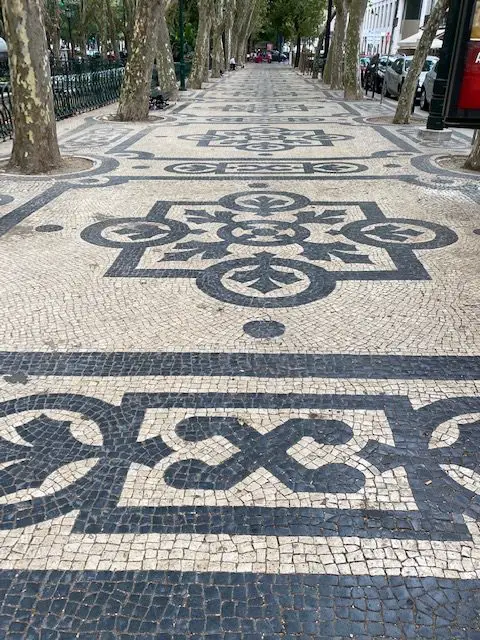

More fantastic Portuguese mosaics can be found on Avenida Liberdade, the central, upscale shopping street that runs north from Restauradores Square to the Marquês de Pombal roundabout.
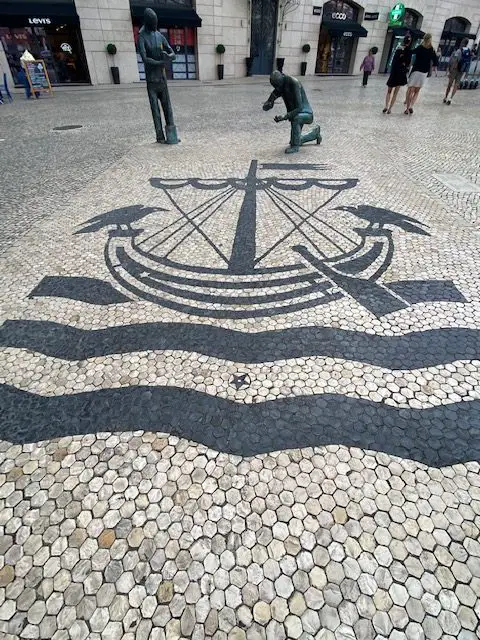
At Restauadores Square, there is a monument to the calceteiros at Restauradores Square next to the Avenida Palace Hotel. The bronze calceteiros were created in 2006 by Sérgio Stichini. A plaque reads “A tribute from the city of Lisbon to the pavers who build the ground we tread.”
One of the most intricate cobblestone patterns in the city is a cooperative effort between the urban plastic artist VHILS (Alexandre Farto), Jorge Duarte – Lisbon’s master paver, and Lisbon’s calceteiros. Together in 2015 they created this beautiful portrait of Fado singer Amalia Rodrigues.
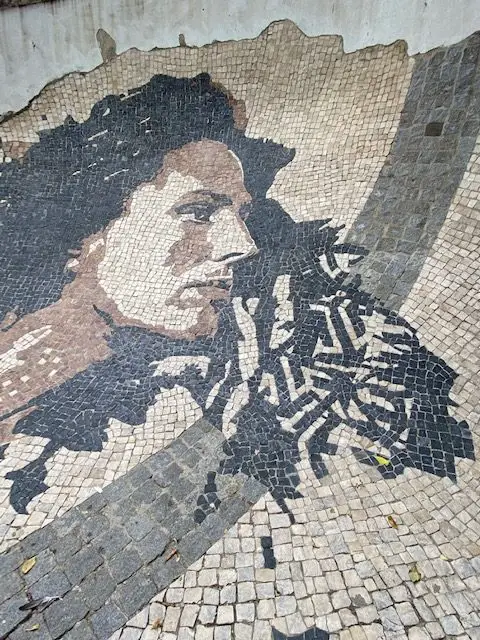
The Amália Rodrigues portrait is located in the Alfama neighborhood. It is roughly 40 meters uphill from the Miradouro das Portas do Sol viewpoint, behind a bus stop shelter on the opposite side of the street.
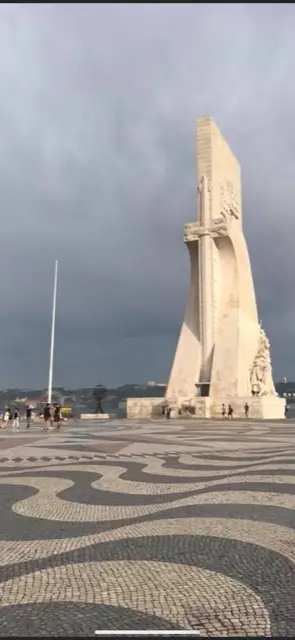
Another stunning design can be found in front of the Monument to the Discoveries. This compass rose and map of the former Portuguese colonies were a gift to Portugal from the government of South Africa.
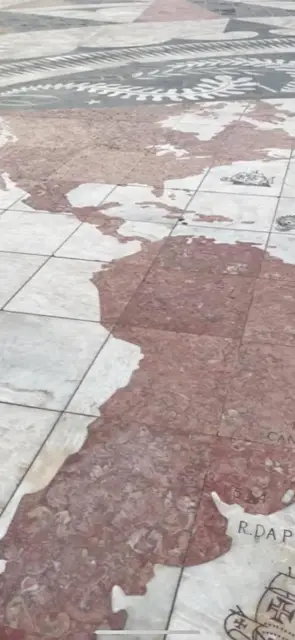
The future of Portuguese Pavement
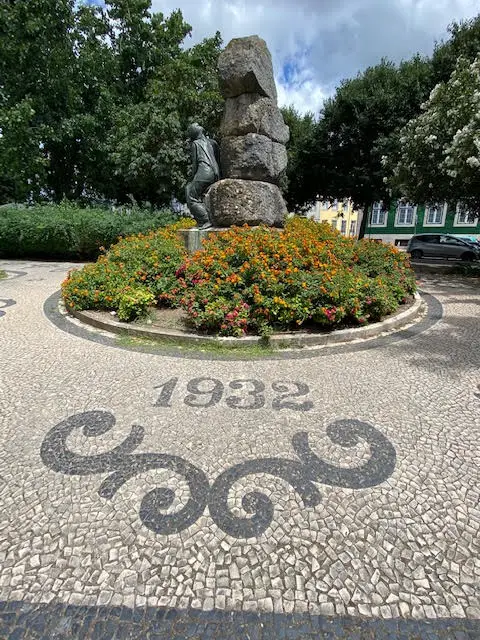
While Calcada Portuguesa is beautiful and historically significant, there is a debate raging about whether of not to preserve or remove existing mosaics.
One factor is that there is not as much limestone available as there once was, and the stone has become more expensive while maintenance budgets have become smaller. Many of the sidewalks are in disrepair.
Another factor is that while there used to be hundreds of stone-workers, today there are only 10 in Lisbon.
In order to work on the city’s trademark black and white cobblestones, you have to be certified by the Escola Municipal de Calceteiros de Lisboa.
The work is physically demanding. So much of the day is spent squatting or kneeling, and the pay is only minimum wage. Not many people complete the training program today, and even fewer stay on the job for long.
The biggest reason fueling the debate though, is that the cobblestone pavements can be dangerous. There are often potholes in the sidewalks.
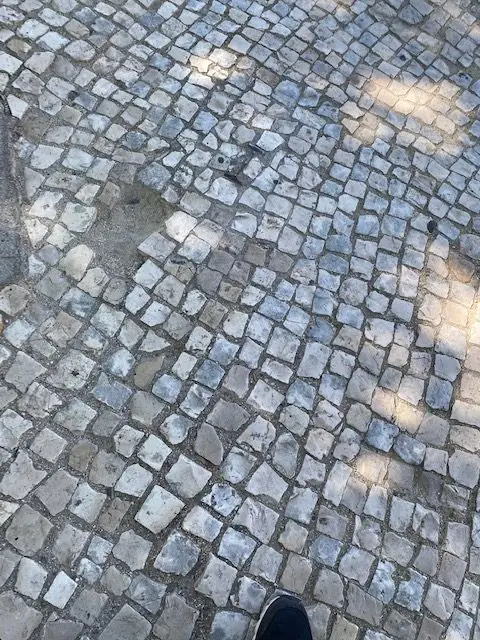
Reliable footwear with good grip is extremely important when navigating Lisbon’s sidewalks and hills. Wearing high-heals on the streets is a terrible idea.
The cobblestones become extremely slippery when wet, and it is quite easy to fall. In fact, as the stones age and wear, they become very smooth and slick. They are often slippery even when they are not wet.
Thank you for reading about Portuguese Pavement on my site. If Lisbon’s black and white cobblestone mosaics appeal to you, you might also be interested in reading more about Lisbon’s tiled houses – A tradition you will love Or you might really enjoy a visit to the National Tile Museum in Lisbon | A Quick Guide
If you buy something from a link on this page, I may earn a small commission. Thank you for supporting my work.